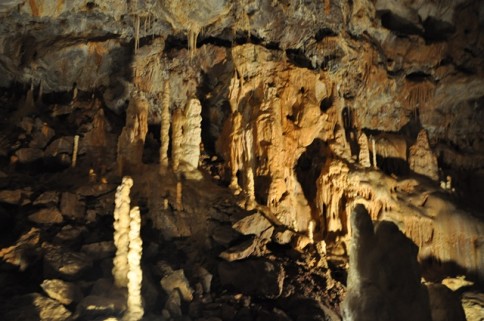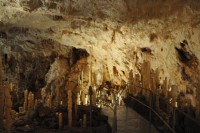Speleology Tourism in Romania
Location:
Caves are everywhere on Romania’s territory, but the most concentration of caves is around Apuseni Mountains (Bihor, Alba, Cluj Counties).
Address:
Romanian Federation of Speleology, Bucharest, Calea 13 Septembrie No. 13.
Caving and speleology tourism clubs:
www.speologie.org/Cluburi-de-Speologie
Telephone:
+40 721 147774
Website:
E-mail:
When to go:
All year round because the temperature in caves is always constant of 10-12º C. However is preferably to practice the Speology tourism between March and April and between September and October when you can combine this activity with other types of tourism.
Speleology Tourism in Romania
What is the Speleology Tourism in Romania:
The Speleology Tourism in Romania is in fact a tourist activity practiced with a specialized guide (in Romania or everywhere in the world) and through its scientific and recreational purpose you can visit some natural monuments like caves, avens, caverns and others. To do this, you must be equipped with lighting systems, neoprene suits, bands, hams, tin hats and other equipment because during the path you will pass over some obstacles. On the other hand, the cave which is in fact the main object of the speleology tourism, is defined as a cavity, a natural deep and big underground cavity (good to know that an aven is on vertical and a cave is horizontal), composed after the soluble rocks are dissolved by seeping waters.
Caves and where you can practice Speleology Tourism in Romania:
It’s said that speleology tourism in Romania, a country with over 13.000 known caves and many others waiting to be discovered, is very low or less known and more worrying is the fact that less than 20 caves are arranged in a way or another. Many of these caves are situated in Retezat Mountains from Southern Carpathians and Apuseni Mountains from Western Carpathians. Maybe one of the reasons that many great caves which attracted in time those who discovered them and those who visited them are closed, is the fear not to be vandalized, degraded in a way or another, because these natural underground wonders needed millions of years to be formed.
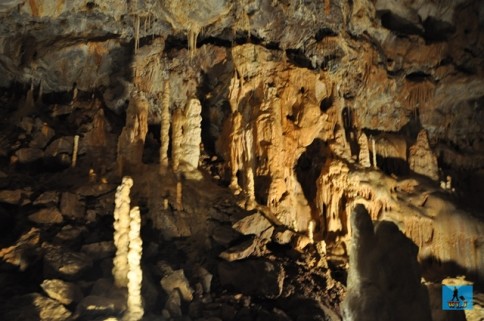 Bears Cave, Bihor County, Romania
Bears Cave, Bihor County, Romania
What is a cave and how to behave if you practice Speleology Tourism in Romania:
A cave is the place where the water meets the dark, fascinating world tourists, most of them choosing to visit a cave just for curiosity, adventure, recreation or for the need of new experiences. (Find more journeys on blog.worldlifetimejourneys.com) That’s why is very important that anyone who practice Speleology Tourism in Romania and goes into a cave to know how to behave, not to touch the formations (I don’t know how many of you know that these formations once touched they stop from growing and is known that they grow very slow), not to use the flash (at least not to be used in an excess way), not to shout, not to run in the cave and they must use proper equipment. Another very important reason for which many of these caves were not arranged in a way or another or they were even closed is to protect these gorgeous or rare formations, but also the unique fauna which can be found underground. From bats, the only flying mammals, bears (temporarily) and till blind fish, spiders or other species of insects, here were discovered many species of animals which live permanently or temporarily in underground.
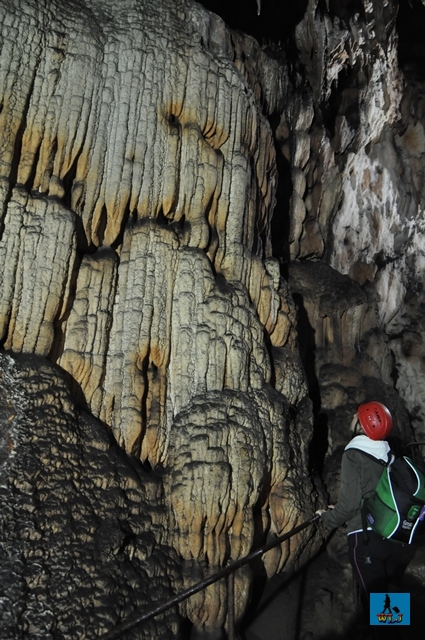 Vadu Crisului Cave, Bihor County, Romania
Vadu Crisului Cave, Bihor County, Romania
History of Speleology Tourism in Romania:
Speleology lovers, an unknown name when for the first time appeared the concerns related to the study and exploration of the caves, begun to appear even since the first part of XVIII century. Since then and until 30-40 years ago when the idea of speleology tourism in Romania started to be more appreciated, cavern lovers wrote many books in which they described different caves from Romania. Emil Racovita also known as the father of Romanian bio-speleology is a well known name to Romanian people because in 1920 he is the person who established the Speleology Institute from Cluj in order to research the caves and with a bio-speleological character.
The first Romanian speleology club was founded at 6th February 1966 in Cluj under the name of Amateurs Speleological Club and the modern speleology tourism in Romania was born only in 1972 when a group of speleologists founded the association Speo Sport included in the Climbing Federation. Later on 28th May 1994 was founded the Romanian Federation of Speleology through the union of many associations and the main purpose is to protect the caves and speleologists.
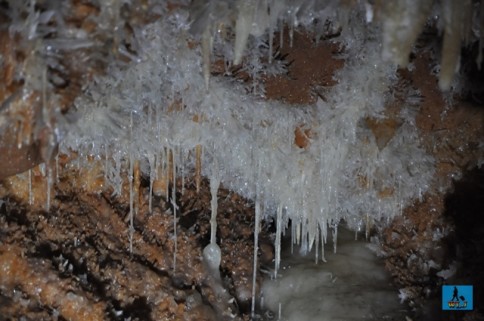 Cave with crystals from Farcu, Bihor County, Romania
Cave with crystals from Farcu, Bihor County, Romania
What caves you can visit and where to go for Speleology Tourism in Romania:
Even if the desire to arrange and develop the speleology tourism in Romania is big, today Romanian and foreign tourists can enjoy the visit with a specialized guide of only some km of arranged galleries from the total of more than 1000 km. These arranged galleries for practicing the speleology tourism are part from a reduced number of caves. According to Salvaspeo Romania, approximately 400 caves have a tourist potential but are not arranged (we’re talking about caves in which anyone can go in, even without professional equipment) and another 4.000 are on the caves list where speleology tourism can be practiced (visiting the cave with a guide). Among all partially or totally arranged caves we mention:
Ursilor (Bears) Cave which is also the best known nationally and internationally, Scarisoara Glacier Cave (Glacier from Scarisoara), Vadu Crisului Cave, Ialomita Cave, the Cave with crystals from Farcu, Valea Cetatii Cave, Muierilor Cave, Polovragi Cave, Dambovicioara Cave and others. More details about these caves and about many others you can find in our future articles. Doesn’t matter what cave you choose to visit, you will have unforgettable experiences because no matter how well you know these underground wonders, they will always hide a mysterious air in which you will be surrounded once you entered them. (Find more journeys on blog.worldlifetimejourneys.com) If you have the possibility, once you are deeper into the cave, try to turn off all the lighting devices and listen in silence at least for a few minutes the cave breathing. The water drops, where they exist, will give you the sensation that the cave is alive and maybe only then, you will realize how hard these gorgeous formations have formed. Practice the speo tourism in Romania!
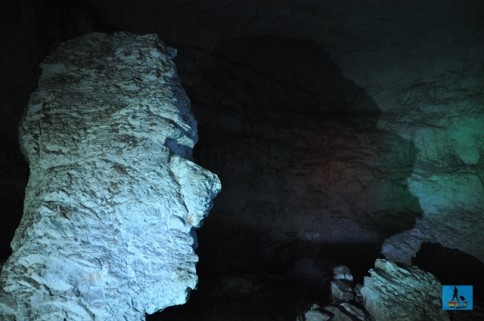 The Sphinx from Meziad Cave, Bihor County, Romania
The Sphinx from Meziad Cave, Bihor County, Romania
